Lion of Jordan (106 page)
Authors: Avi Shlaim

26. President Carter (
left
), Hussein and Mohammad Reza Pahlavi, the Shah of Iran, at the Niavaran Palace, Tehran, 1978
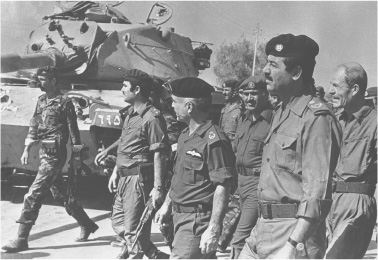
27. Hussein with Saddam Hussein, 1980
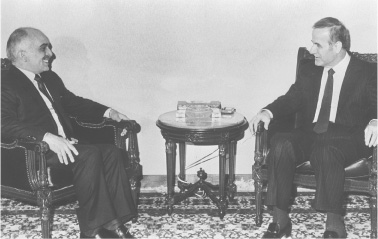
28. Hussein with President Hafiz Al-Asad of Syria, 1985
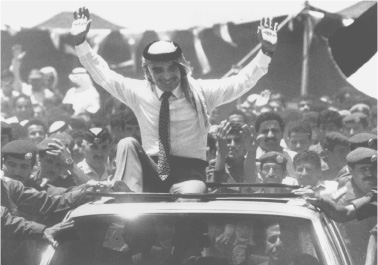
29. Celebrating Jordanian Independence Day, 1992
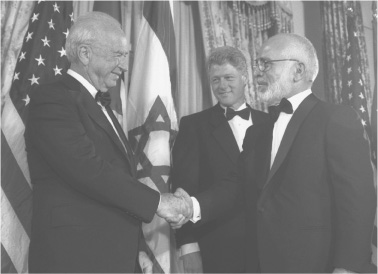
30. Israeli Prime Minister Itzhak Rabin and Hussein shake hands as President Clinton watches, Washington, 26 July 1994
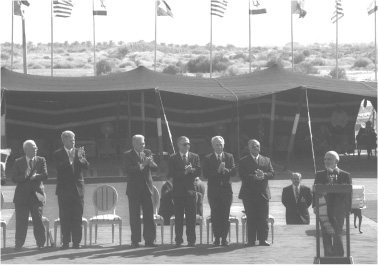
31. Hussein addressing the audience during the IsraelâJordan Peace Treaty signing ceremony, Wadi Araba, 26 October 1994

32. The heads of state adjust their neckwear in preparation for the âOslo II' signing ceremony at the White House, 28 September 1995 (
left to right
): Rabin, Mubarak, Hussein, Clinton and Arafat
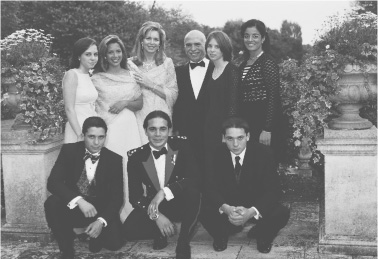
33. King Hussein and Queen Noor's twentieth wedding anniversary, 1998 (
from left
): (front row) Prince Hamzah, Prince Ali, Prince Hashim; (back row) Princess Iman, Princess Haya, Queen Noor, King Hussein, Princess Raiyah and Abir

34. Hussein praying with Prince Abdullah (
right
) and Prince Hamzah (
left
) at the Prophet's Tomb in Medina, Saudi Arabia, 1998
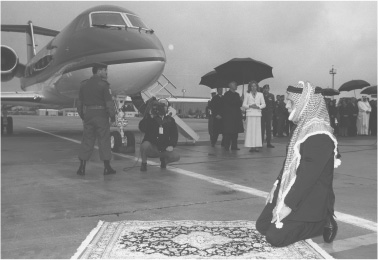
35. Hussein returns home to Jordan after six months' medical treatment in the US, 19 January 1999
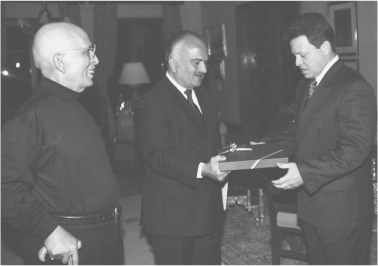
36. Hussein appointing Abdullah Crown Prince over Hassan, 25 January 1999
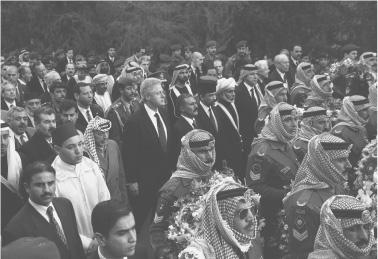
37. Mourners at Hussein's funeral, 8 February 1999, including King Mohammed VI of Morocco, Arafat, Clinton, Sultan Qaboos of Oman and Carter
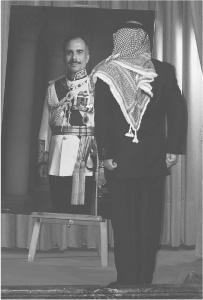
38. King Abdullah salutes a portrait of his father before taking the oath of office, February 1999
An Israeli intelligence report written in the early 1980s described Jordan's King Hussein as a man trapped on a bridge burning at both ends, with crocodiles in the river beneath him: he cannot go forward, he cannot retreat, he cannot jump. He is a slave of the status quo. This uncharacteristically flowery intelligence assessment rightly stresses the extraordinarily severe constraints under which Hussein had to operate throughout his political career. What it leaves out of account are the personal qualities of charisma, courage, determination and farsightedness that enabled Hussein to cope with these constraints and to survive in the face of overwhelming odds.
Hussein was a full-blooded Hashemite king. He was a direct descendant of the Prophet Muhammad and the great-grandson of Hussein the Sharif of Mecca, the leader of the Arab struggle for independence during the First World War. But it was his grandfather Abdullah, the founder of the Emirate of Transjordan, who had the most profound influence on his political thinking. It was Abdullah who educated Hussein, who taught him what it meant to be a Hashemite, and who enjoined him to preserve and develop the kingdom that he had created. The assassination of his grandfather and mentor at the Al-Aqsa Mosque in Jerusalem in 1951 was the most formative influence in Hussein's early life. He was only fifteen years old at the time, and the hopes of his family, and especially of his formidable mother, were pinned on him. Thus, from a very young age, Hussein carried on his shoulders a heavy sense of responsibility for the Hashemite heritage. Above all, this meant preserving Jordan as an independent state under the rule of the Hashemite dynasty. It also meant making Jordan a major player in regional and international politics.
